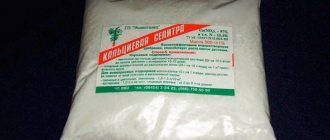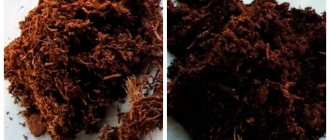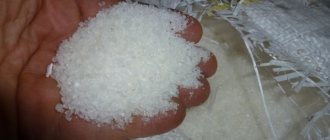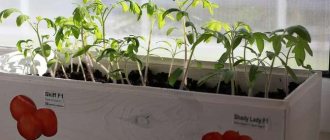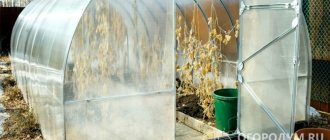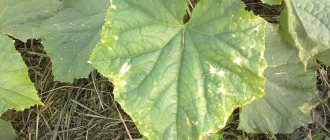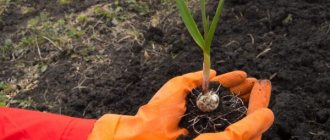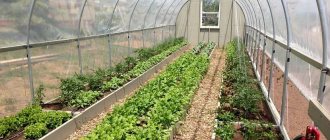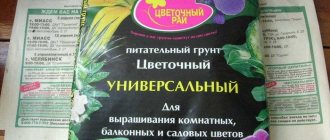Even a carefully prepared soil mixture is not always the most ideal soil for seeds and seedlings. Such a mixture can change acidity over time, caking, “coconut peat”, “coco-soil” and “coconut soil”) - a material made from crushed coconut husk, to which coconut tows (“hairs” are added to create a more air-intensive structure ) and chopped coconut husk (chips). The ratio of particles in this soil is approximately 30% coconut flakes and 70% coconut fiber.
The fibrous coconut husk is ground, fermented for 14-18 months, then dried and pressed into briquettes, tablets or disks of various sizes.
The coconut peel (shell) contains natural antiseptics that suppress pathogenic microflora.
Sometimes peat and fertilizers are added to such a substrate - read the label carefully!
But even without any nutritional additives, the result is a natural, environmentally friendly organic material with optimal acidity for plants, suitable for growing almost any agricultural crops, vegetable and flower seedlings, and indoor plants.
Advantages of using coconut substrate:
- Safety for plants - coconut substrate does not contain pathogenic microflora and weed seeds; it does not need to be disinfected before planting seedlings or sowing seeds.
- Optimal acidity - the pH of the coconut substrate is in the range of 5.6-6.8, which is favorable for most crops.
- Coconut substrate has a high moisture capacity (it holds 7 times its weight in moisture), absorbs moisture and gradually releases it to the plants, as a result of which you will never “flood” them.
- It does not cake, does not form a crust on the surface and has high breathability - creates an ideal breathable environment for the development of a healthy root system, which increases the yield and resistance of plants to disease.
- It has excellent thermal conductivity - protects young shoots from temperature changes.
- Coconut substrate has many other uses: as mulch, as a winter covering material in a flower garden, as a loosening agent for heavy clay soils, as a component that increases the moisture capacity of sandy soils, as a soil for keeping rodents, snails and amphibians; as a material for hydroponic growing of greens.
- Retains its properties after drying.
- After washing and disinfection it can be reused.
- Shelf-life Unlimited.
- Coconut substrates are easily and completely recyclable - just chop them up and plow them into the ground in the garden or field.
Coconut soil is very easy to use. To prepare a coconut substrate for plants (stratification or germination of seeds, growing seedlings), a dry briquette purchased in a store should simply be soaked in clean warm water in a volume ratio of 1 to 4, wait 10-20 minutes until the coconut fiber absorbs the liquid, then mix thoroughly and use.
Coconut substrate absorbs water well and swells quickly. If you are preparing a large amount of soil, it is better to add water gradually and stir the mixture several times so that it is evenly saturated with moisture.
If any part of the coco soil remains unused, be sure to dry it before storing, otherwise it will turn sour.
What is coconut substrate
Coconut substrates, also known as coconut peats and soils, are pressed nut peels crushed into shavings.
To improve the structure, coconut fiber is added to the ground raw materials. The raw materials are crushed, fermented for about 14–18 months, dried and pressed. This is how briquettes, discs and tablets are obtained. Sometimes manufacturers add fertilizers to the substrate, so you need to read the label before purchasing. Even without any additives, coconut substrate becomes the optimal environmentally friendly medium for growing plants, vegetables and flowers. Abroad, the substrate is used in greenhouses, greenhouses and fields as a soil substitute or additive to it. In Russia, the product has become known since about 2013, and many gardeners are still skeptical about the new product. The main reason is the lack of information.
Do I need to disinfect coconut soil?
The substrate itself is an environmentally friendly product; it does not contain any pathogenic microorganisms or larvae. That is, it is completely harmless. It will not be superfluous if you pour it with a phytosporin solution before use. This will make the soil more nutritious and saturate it with beneficial microorganisms, which are also needed for normal plant growth. And in the future it will suppress the growth of pathogenic microbes and fungal spores.
Types and forms of release
The soil substitute is available in three types:
- Fiber - thread-like fibers up to 30 cm long, durable and moisture-absorbing.
- Peat is finely ground coconut shell that retains moisture well.
- Chips are large particles of crushed shells that do not interfere with air exchange.
The technology for preparing the substrate is lengthy and complex. The result is briquettes that can expand 2–3 times, mats and tablets in a fine mesh.
Coconut substrates can be pressed or unpressed.
Unpressed are available in three sizes:
- Small shavings absorb water best and are used for sowing seeds.
- Fiber from thin threads of the middle fraction is used to improve the structure of the soil.
- Coarse substrate is used for those plants that require permeable, aerated soil, such as orchids and gerberas, and also as drainage.
Pressed coconut fiber substrate is available in the form of:
- tablets - for seeds and cuttings;
- briquettes (bricks, chips) - for planting seedlings;
- circles and layers - for mulching fruit trees and shrubs;
- pots - for growing seedlings.
In what form is it sold?
The substrate is sold in stores in three types:
- Pills. These are small pressed round discs. Their volume ranges from 5 to 20 cm cubed. The weight is small, a large specimen has a mass of 650 g. But upon contact with moisture it swells greatly. These tablets are based on short coconut fibers.
- Mats. They have a rectangular shape, weight varies from one and a half to 5 kg, and upon contact with water they increase several times. Here manufacturers already use long fibers.
- Briquettes. Basically, the substrate is sold in this form. It may vary in size and weight too. Large briquettes are bought by gardeners who grow seedlings for sale.
Coconut peat in briquettes
Which option to choose is up to everyone to decide for themselves. Regardless of the form, the properties are the same for all.
Advantages and disadvantages of specific soil
One of the main advantages is ease of use. Before using coconut substrate, you just need to soak it in warm water 1:4 for 20 minutes, then mix and use for its intended purpose.
Other advantages of the ecological substrate:
- safety for crops due to the absence of pathogenic microflora and weed seeds;
- optimal acidity (pH from 5.6 to 6.8), which is suitable for planting most cultivated plants;
- high moisture capacity (the ability to hold 7 times more water compared to its weight);
- no caking, high breathability;
- excellent thermal conductivity for protection against temperature surges;
- variability of use (mulch, covering material in the flower garden, loosening agent for clay soils, etc.);
- maintaining properties even after drying;
- Possibility of reuse after thorough washing and disinfection;
- unlimited shelf life;
- ease and simplicity of disposal.
But there are also some disadvantages:
- the high price does not allow the use of raw materials everywhere. Most often, coconut soil is used for seedlings in small containers;
- Before use, the coconut substrate still needs to be prepared - soaked and, if necessary, added fertilizer;
- low-quality raw materials (poorly washed to remove salts and impurities) will negatively affect plants;
- Coconut fiber is not suitable for some plants (desert cacti, for example).
Advantages
Farmers’ love for coconut husk products is explained by the following facts:
- the acidity of the substrate is 5.6-6.8 pH, making it suitable for almost any plant;
- excellent moisture capacity, which allows plant roots to take water from the fibers gradually and not rot;
- good air permeability, ensuring the flow of oxygen to the root system of seedlings without additional loosening;
- resistance to pathogenic microflora, since coconut peel contains natural antiseptics.
How to properly prepare tablets and briquettes
There is no particular difficulty in preparing the substrate. All activities are carried out according to the instructions indicated on the packaging of the tablets. After unpacking, the product is washed with running water to remove salt. Next, place in a container with a sufficient volume of water for swelling at the rate of 5 liters of water per 1 kg of substrate.
After the fibers swell, coconut substrate is immediately used for plant seedlings. If we are talking about a tablet, seeds are placed in a depression on the surface. When briquettes are used, they are evenly laid out in containers for sowing. The planted seedlings are covered with film to maintain optimal levels of humidity and temperature.
Typically, 15 liters of soil are obtained from 1 kg of dry substrate. Stores sell briquettes that, when swollen, yield 4–7 kg of finished soil. Considering that there are no useful substances in the shavings, in order to obtain better soil, 1-2 caps of fertilizers corresponding to the needs of the crop are added to the water to wet the coconut raw material.
Step-by-step instructions for use
You can purchase coconut briquettes for growing seedlings at any gardening store. However, they come in different production and quality. The main thing is to choose the one that suits you specifically. How to use this unusual briquette, which can easily turn into a substrate?
Step 1. Calculate your needs. Remember that when a briquette weighing 1 kg swells, a lot of substrate is obtained - about 7-8 liters. Think about how much coco soil you need right now. Let's say you need all these 7-8 liters, then prepare a container of about 10 liters for soaking the briquette.
Preparing everything you need
Step 2. Unpack the briquette and place it in a container, fill it with a small amount of warm water. After some time, if necessary, it can be divided into several pieces and placed in different containers.
Coconut briquette is placed in a container
Step 3. Fill the container with pieces of briquettes completely with water. If you don’t need to divide it, you can immediately pour a full 10-liter container of water. The “brick” will soften completely in 15-30 minutes.
Water is poured into a container with coconut briquettes
On a note! Before use, thoroughly rinse the coke primer in water. The fact is that it may contain an excess of sea salt (it is used in the production process), which will negatively affect the condition of the plants. But these salts are easily washed away with water. To do this, the swollen substrate can be placed in a colander and rinsed.
Step 4. After washing the soil, set it to dry. This process lasts approximately 2-3 weeks. During drying, periodically loosen the substrate. However, even at the end of the drying procedure, the soil will be slightly damp - this is normal and is explained by its moisture capacity.
Ready coconut substrate
The result is a pleasant, loose, airy structure, reminiscent of high-moor peat in color. And it can already be used according to your needs and wishes. Remember that seedlings can be planted either in a clean substrate or in a mixture with garden or purchased soil.
After the seedlings have been grown and planted in the ground, you may have some free coconut substrate, but do not rush to throw it away, because it can be reused. To do this, first place it in a container and fill it with an aqueous solution of an EM preparation that prevents the development of various harmful fungi (they could get into the substrate during use). Periodically moisturizing, give the substrate time to brew for about a month, after this disinfecting procedure you can again use the coconut fiber obtained from the briquette.
The seedling is planted in a mixture of humus, coconut substrate and garden soil
It is also believed that excellent soil can be prepared using a substrate obtained from coconut briquettes. To get 100 liters of soil mixture, you will need a coconut fiber briquette weighing 5 kg, 1 liter of liquid vermicompost and 25 liters of dry biohumus, as well as 23 liters of ordinary water. Liquid vermicompost is mixed in clean water, then a coconut briquette is placed there, which it is advisable to press down to the bottom with something. The swelling soil is transferred to a clean container and then mixed with dry vermicompost.
The resulting soil mixture can be used for seedlings or any gardening needs related to growing or replanting plants. It will be very crumbly and airy, and also enriched with nutrients and substances, the supply of which will be enough for several years in a row (about 5-6). If excess soil is packaged and compressed, it can be stored for a very long time.
Packaged soil mixture
The use of coconut substrate, taking into account the type of crop and the growing season
In order for cultivation in the substrate to meet expectations, you should follow the recommendations for the types of crops:
- Seedling. Grow in pure coconut substrate or in combination with vermiculite and compost 1:1. If we are talking about sowing nightshade seeds, good growth continues only until picking. Next, you need to transplant it into soil with useful substances.
- Indoor flowers. The soil in flowerpots quickly cakes, causing plants to develop poorly. The problem can be eliminated if, during planting, you mix the nutrient soil with coconut substrate 1:1.
- Germinating dahlias, lilies and other bulbous ornamental crops in a substrate will speed up the flowering stage.
- Geranium and tuberous begonia germination in garden containers is accompanied by soil compaction after watering and rain. You can improve the conditions for the growth of container plants by adding substrate to the soil in a ratio of 1:3.
- Sowing seeds. To germinate the seed material of vegetables and flowers in the greenhouse and on the beds, the grooves with seeds are sprinkled with coconut substrate. This will make it easier for the sprouts to break through.
- Mulching. If there is a lot of substrate left after seedlings, it is a good idea to sprinkle it between the plants and under the bushes. After some time, the coconut fiber will rot, turning into organic fertilizer.
How to choose the right one
Before choosing a nutrient substrate, you should pay attention to the market for the products offered. Study the manufacturer, release forms, prices and quantity of the finished mixture. Experienced specialists prefer proven brands - Profimix, Growblock or Cocoland. But the release form is chosen based on the tasks assigned to the soil.
Peat is suitable for seedlings. For most indoor plants, it is optimal to use coco soil with a coarse and medium fraction. Most often, the packaging contains manufacturers' recommendations and tips for using each product.
Coconut substrate is a new, but already proven product among gardeners. This is an environmentally friendly and safe material that has virtually no disadvantages. It is easy to use and store.
The benefits of coconut substrate for seedlings
A high-quality substrate is sterile, which eliminates many problems associated with growing seedlings. So, you don’t have to be afraid of sprouted weeds or hatched insects. The only drawback is the deficiency of nutrients, so it is good for pre-sowing preparation of plants, and over time the seedlings will have to be fed with fertilizers.
To grow young plants after picking, the swollen briquette is mixed with garden soil (previously disinfected) in a 1:1 ratio. Light soil is mixed with coconut shavings in a volume of 2:1. This way the seedlings will adapt to the soil on the site and form an appropriate root system.
When planting a crop in open ground, it is recommended to put coconut peat in the hole so that the roots develop faster. The benefit of the substrate is to improve the delivery of nutrient solution and oxygen to the roots due to its loose structure.
Application
Coconut substrate can be used for different purposes, depending on what you want to achieve. This soil is excellent for any plants, including ornamental ones. This is confirmed by numerous positive reviews from experienced and novice gardeners.
Swollen coconut tablet with sapling
Table. Ways to use coconut briquettes.
| Method of use | Description |
For growing seedlings | In this case, the coke briquette is soaked, and the resulting loose mass is mixed with ordinary soil in a 1:1 ratio. In some cases it can be used in its pure form. Of course, it is easy to find topics on the Internet where coconut substrate is compared to lifeless perlite. But soil obtained from a briquette is still a “living” organic material. Various plants, including orchids and ficus, thrive in clean coconut substrate. |
To improve soil quality | Dry coconut substrate can be added to regular ready-made or homemade soil. The material improves the quality of the soil, making it more airy. |
For indoor plants | The briquette is used in the same way as for growing seedlings. It is safe and is not a breeding ground for small midges, which gardeners so often encounter. Coconut substrate is ideal for rooting cuttings of various flowers - fuchsia, violets, begonias, geraniums and others. It is enough to place the shoots in the soil and lightly compact it around, and then cover the container with the cuttings with a bag. |
For planting vegetables and flowers | Coke substrate from briquettes can also be used when planting plants in open ground. To do this, the substrate is brought into the ground in the garden bed and dug up. In order not to overdo it with the quantity, first place it on the surface of the ridge in a layer of about 7 cm. |
For shrub plants | If you decide to use soil for planting shrubs and trees (which is also very good for them), then place soil made of soil and coconut substrate in a 1:1 ratio into the prepared hole and plant the plant in it. |
For mulching | The substrate obtained from coconut briquettes is also excellent for mulching beds. True, this method is not cheap, but it saves effort and time, and the quality of such mulch is excellent. |
On a note! Interestingly, coconut fiber can even be used as bedding for pets in terrariums, cages, and enclosures. This material is hygienic and practical, and it is also easy to use.
Tarantula spider on a bed of coconut substrate
Storage standards for coconut substrate
Coconut substrate is safe when used correctly. If the substrate is used on contaminated soils, it can cause the spread of disease and possible plant death and crop loss.
The rules for recycling are simple: you can distribute the used substrate in the garden and on the field for digging. Wet, unused substrate should not be stored in bags or sealed containers, as this will cause souring. To store the fibers, they are well dried in the sun and only then packaged.
The effectiveness of coconut peat has been proven by the positive experience of its use in many foreign farms. With its help, it is possible to improve soil quality, increase productivity and speed up vegetation processes. All of the above is possible provided that the product is used correctly.
How it will be useful in a greenhouse
Cheapness and predictability are the two main advantages of coconut soil, which make it very popular in greenhouse crop production. Besides:
- it decomposes very slowly, so it can be used without replacement for 5–6 years;
- it can be disinfected by calcination - this does not affect the basic properties of the soil;
- For all its hygroscopicity, such soil has high breathability and looseness, which allows plant roots to feel free and receive enough oxygen and moisture. Even with overflow, soil aeration does not fall below 20%;
- coconut fibers retain nutrients, slowly releasing them to the roots, which protects plants from micronutrient deficiency when the balance is upset;
- the soil can be disposed of by mixing it with garden soil or sending it to a compost heap.
Another advantage over natural soil is its purity from pathogenic microorganisms, which often cause disease and death of young plants. In greenhouse conditions, when air humidity is high and there is no natural ventilation, this problem faces the grower especially acutely. Bacterial and fungal diseases that can mow down seedlings, reduce yields, and spoil ripening fruits occur extremely rarely when using coconut soil, since their reproduction is suppressed by fungi of the genus Penicillum, Trichoderma and Aspergillum living in the coconut substrate.
Coconut substrate has bactericidal properties
The substrate has only one significant drawback: very often it contains sodium, chlorine and potassium - coconut palms grow on the ocean coast and the nut shells absorb sea salt. Therefore, before use, you need to thoroughly rinse the soil to remove excess substances from it. Otherwise, it may negatively affect the condition of the plants.
Due to its neutral characteristics, this soil is well suited for growing any crops: cucumbers, tomatoes, strawberries, lettuce, and also as a substrate for ornamental plants. It is only necessary to regularly apply the fertilizers recommended for each specific crop when watering.
Fertilizers for coconut substrate
Coconut substrate partially blocks the absorption of nutrients, which means that plants cannot receive the full benefits of fertilizers. For this reason, the dosage of nutritional supplements for coconut soil should be greater than for ordinary soil, both when sowing seeds and during additional fertilizing. Plants grown on coconut soil have a particularly strong need for potassium. It is best to use specialized compounds.
Some gardeners do not use coconut substrate for plants in its pure form, but prepare a soil mixture based on it with the addition of humus. To do this, take 1 kg of dry coconut substrate, mix it with 200 ml of vermicompost and add 2.5 liters of water. Thus, you get about 20 liters of soil saturated with nutrients.
Flaws
Coconut substrate also has disadvantages:
- One of the main disadvantages of coconut biosoil of any form is its high price. This disadvantage is offset by the ability to use the fiber for at least 5 years.
- the second nuance is the need for specific preparation before use. This applies to briquetted forms. But this can only be considered a minor drawback, since the classic soil mixture also needs to be prepared before sowing seeds or picking.
- One of the significant disadvantages is the likelihood of purchasing a low-quality mixture, which is why the plants may not receive enough nutrition and stop developing.
Washing
To create an effective mixture for seedlings, briquettes or mats are first spilled with hot running water or boiling water. To do this, you will need a container with holes for moisture to drain, a sieve or a nylon bag. After careful processing (5-6 times), the excess liquid should drain off.
This gets rid of salt compounds, dust and pest spores. The percentage of salt content in coconut fibers is controlled using special devices - an EC meter and a TDS meter. Using water with a pH level of 5.5–6 makes it possible to carry out preliminary buffering. You should not ignore washing: the seedlings will not like such negligence, and the seedlings will die.
Possible problems
Despite the many benefits of coconut substrate, it also has a few disadvantages. To be fair, they are not related to the soil itself, but rather to the briquette producers (Figure 4).
Firstly, despite its growing popularity, coconut substrate is still expensive. Therefore, its use is limited to growing seedlings in small pots or containers. Secondly, it cannot be called completely ready for use. Before placing it in containers, the substrate will still have to be soaked and, if desired, fertilizers added to it.
Figure 4. Poor quality substrate can cause seedling diseases
In addition, recently a lot of low-quality coconut substrate has appeared on the market. It is not sufficiently washed to remove seawater and impurities, and often has a negative effect on the development of plants. There is only one way out - either buy products from trusted manufacturers, or additionally rinse the substrate before use.
